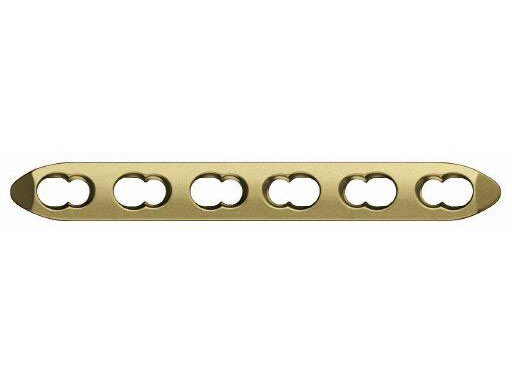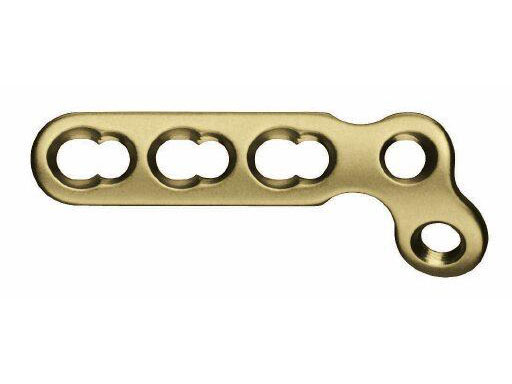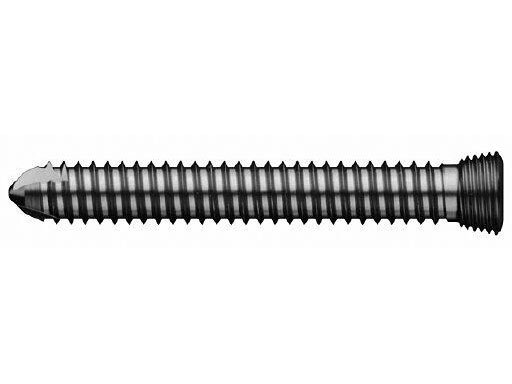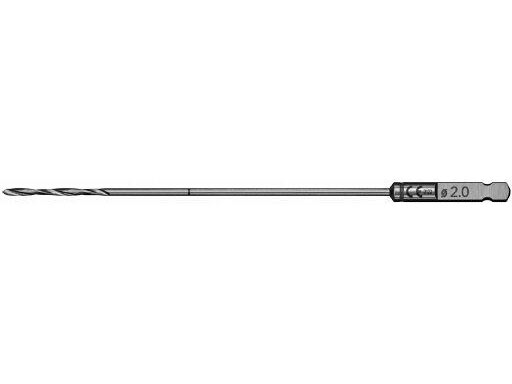
Modular / Compact Hand Set
The Compact Hand Set 2.0 and 2.4 is designed for distal radius, subcapital radial head, phalangeal, metacarpal and metatarsal (II-V) fractures as well as osteotomies and arthodesis in dthe hand. All plates are now available as Locing Compression Plates (LCP) with the following advantages: minor primary and secondary loss of reduction, reduced screw pull-out, less periosteal compression, better hold in osteoporotic bone, more stable fication and bridging of fragments.
All plates and screws an be obtained either in titanium or stailness steel.
LCP Plate 2.0 and 2.4, straight, 48 holes, TiCP
These plates correspond to the respective former LC-DC plates, thus are intended for the same indications, including the new features of the combi-hole/locked screws.
LCP Plate 2.7, straight, 412 holes, TiCP
Particularly for metatarsal shaft fractures and correcting osteotomies of the first ray.
LCP Condylar Plate 2.0 and 2.4, 7-Holes, TiCP
These are new designs with respective modifications of the condylar plates. Here, the new geometry eliminates the need for separate left and right plates and also introduces the Locked Condylar Screw (instead of the fixed condylar blade) into the 2.0 mm system.
LCP T-Adaption Plate 2.0 and 2.4, 7 holes, TiCP
This plate has been developed for comminuted articular and metaphyseal fractures of metacarpals and some of the proximal phalangeal base fractures.
LCP Y-Adaption Plate 2.0 and 2.4, 7 holes, TiCP
This plate has been developed for comminuted articular and metaphyseal fractures of metacarpals and some of the proximal phalangeal base fractures.
LCP T-Plate 2.4, extralong
This plate is indicated in Colless fractures with extension into the shaft.
The plate will be available in three lengths: with 8, 10 or 12 holes in the shaft. It is anatomically pre-bent for application on the volar side of the distal radius.
The shaft area features combination holes, two of which are elongated to allow longitudinal adjustment of the plate. The dimension of the screw holes is 2.4 mm. However, in the shaft, the DC-part of the combination hole allows for a 2.7 mm cortical screw. A specially designed 2.7 mm Locking Screw with a 2.4 mm head can also be used in the shaft.
The plate will be available in titanium and stainless steel.
LCP L-Plate, oblique, 2.7, right and left versions, 3 & 4 holes, TiCP
For fracture and fusion fixation, especially the proximal part of the fifth ray.
Buttress Pin, 1.8, head LCP 2.4, lengths 1230 mm, TAN
Smooth pins can also be used and locked to the plate as an alternative to a locked or condylar screw.
LCP Locking Screw 2.7 (head 2.4)
The LCP Locking Screw has a 2.7 mm diameter but a 2.4 mm head, which makes it stronger than the 2.4 mm Locking Screw. This feature is important in this application, as the plate has a bridging function and needs stable screw insertion.
The screws are self-tapping and available in lengths from 660 mm. They are available in titanium alloy (TAN) and stainless steel.
Bending Pin for LCP Plates 2.0 and 2.4 mm
A Bending Pin has to be used to contour the plate.
Drill Bit, with measuring scale, for Mini Quick Coupling, 2-flut, SS
The Drill Bit incorporates a measuring scale for easy determination of the screw lengths.
Screwdriver Shaft Stardrive 2.4, short and long
A Screwdriver Shaft for the Stardrive Screwdriver is offered in a short and long version.
LCP Drill Sleeve 2.0, with Scale
A scale on the Drill Sleeve allows length measurement.
LCP Drill Sleeve 2.4
For the new LCP Locking Screws 2.7 (head 2.4), a special Drill Sleeve for Drill Bits with 2.0 mm diameter has been developed.
Hazards and labeling
Due to varying countries’ legal and regulatory approval requirements, consult the appropriate local product labeling for approved intended use of the products described on this website. All devices on this website are approved by the AO Technical Commission. For logistical reasons, these devices may not be available in all countries worldwide at the date of publication.
Legal restrictions
This work was produced by AO Foundation, Switzerland. All rights reserved by AO Foundation. This publication, including all parts thereof, is legally protected by copyright.
Any use, exploitation or commercialization outside the narrow limits set forth by copyright legislation and the restrictions on use laid out below, without the publisher‘s consent, is illegal and liable to prosecution. This applies in particular to photostat reproduction, copying, scanning or duplication of any kind, translation, preparation of microfilms, electronic data processing, and storage such as making this publication available on Intranet or Internet.
Some of the products, names, instruments, treatments, logos, designs, etc referred to in this publication are also protected by patents, trademarks or by other intellectual property protection laws (eg, “AO” and the AO logo are subject to trademark applications/registrations) even though specific reference to this fact is not always made in the text. Therefore, the appearance of a name, instrument, etc without designation as proprietary is not to be construed as a representation by the publisher that it is in the public domain.
Restrictions on use: The rightful owner of an authorized copy of this work may use it for educational and research purposes only. Single images or illustrations may be copied for research or educational purposes only. The images or illustrations may not be altered in any way and need to carry the following statement of origin “Copyright by AO Foundation, Switzerland”.
Check www.aofoundation.org/disclaimer for more information.
If you have any comments or questions on the articles or the new devices, please do not hesitate to contact us.
“approved by AO Technical Commission” and “approved by AO”
The brands and labels “approved by AO Technical Commission” and “approved by AO”, particularly "AO" and the AO logo, are AO Foundation's intellectual property and subject to trademark applications and registrations, respectively. The use of these brands and labels is regulated by licensing agreements between AO Foundation and the producers of innovation products obliged to use such labels to declare the products as AO Technical Commission or AO Foundation approved solutions. Any unauthorized or inadequate use of these trademarks may be subject to legal action.
AO ITC Innovations Magazine
Find all issues of the AO ITC Innovations Magazine for download here.
Innovation Awards
Recognizing outstanding achievements in development and fostering excellence in surgical innovation.



















